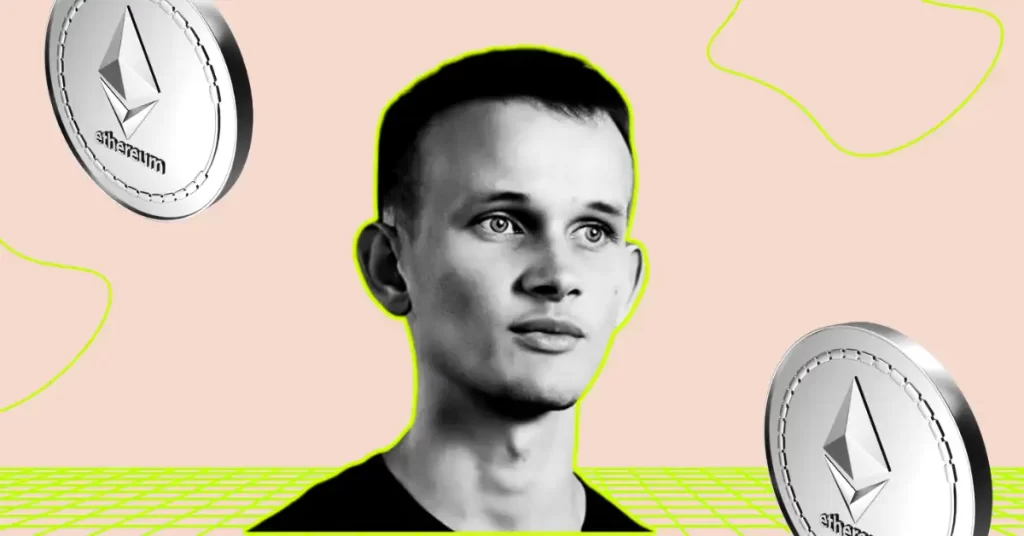Vitalik’s 2025 Ethereum Overhaul: Scaling Beyond Wall Street’s Wildest (and Slowest) Dreams
Ethereum’s co-founder just dropped a roadmap that’ll make legacy finance choke on its own latency. Here’s the breakdown:
The Scalability Surge: Sharding finally delivers—transactions now cheaper than your bank’s overdraft fees.
Privacy That Actually Works: Zero-knowledge proofs go mainstream, letting you hide crypto trades from your nosy CFA neighbor.
Decentralization or Bust: Validators replace miners entirely, proving once again that middlemen are the real ’gas guzzlers.’
Bonus prediction: TradFi institutions will still pretend they ’saw it coming’ while scrambling to hire 22-year-old blockchain devs.

If we’re to be totally honest, Ethereum has not had a good run yet in 2025 and is down 40% over the last year. But that story seems to be flipping now.
Vitalik Buterin, the platform’s co-founder, has been the driving force behind its growth and has outlined an ambitious roadmap for Ethereum’s development. I’m not talking about simple tech upgrades. No, this is about making Ethereum more resilient, decentralized, and useful for everyone.
So, what’s on his mind for Ethereum’s next big chapter?
Ethereum’s Roadmap? It’s About People
Vitalik Buterin has made it clear: his focus for Ethereum in 2025 is two-fold.
For Buterin, Layer 1’s roadmap is at the center of these efforts. Key innovations such as,, and awill help make Ethereum more scalable and secure. This is essential for keeping Ethereum competitive in an increasingly crowded blockchain space.
Twin goals of EF:
1. Usage of Ethereum – but usage of a type where users are actually benefiting from Ethereum’s underlying properties
2. Resilience and decentralization of Ethereum – viewed holistically, focused on addressing points of weakness anywhere in the stack https://t.co/20MUkZ9z3M pic.twitter.com/nkZdzWUKx5
Cardano recently overtook Ethereum in developer activity. Buterin took this in stride, emphasizing the importance of full-stack security, open-source development, and privacy.
Ensuring that Ethereum remains secure and free of centralized intermediaries is central to his vision. This focus will affect everything, including wallets and dApps, as Ethereum continues to mature.
Looking Beyond the Core Protocol
Buterin’s ambitions extend far beyond Ethereum’s main protocol. His vision includes what he refers to as “” – a set of projects aimed at shaping Ethereum’s role in the broader decentralized world.
This involves developing, refining the, and exploringthat are sustainable for the long term.
Additionally, Buterin is looking into,,, and even areas like. These diverse interests hint at the immense scope Buterin has in mind for Ethereum, pushing the boundaries of what a blockchain can support.
There’s No Giving Up on Ethereum
While Ethereum’s growth is impressive, it hasn’t come without its critics.
Charles Hoskinson, founder of Cardano, recently claimed that Ethereum might not last more than 15 years, predicting thatwould eventually pull all the value away.
“I don’t think Ethereum will last more than ten or fifteen years. Layer-2 will siphon off all the value, and users will move elsewhere, ultimately overshadowed by Bitcoin,”
Buterin wasn’t fazed by this criticism. Instead, he responded with a bold new proposal: the.
This was an ambitious proposal that could address Ethereum’s scalability issues head-on. By switching to a more efficient, Vitalik believes Ethereum can becomeand significantly cheaper to use. This upgrade, still in its early stages, could drastically improve transaction speeds and reduce costs, all while maintaining Ethereum’s decentralized nature.

